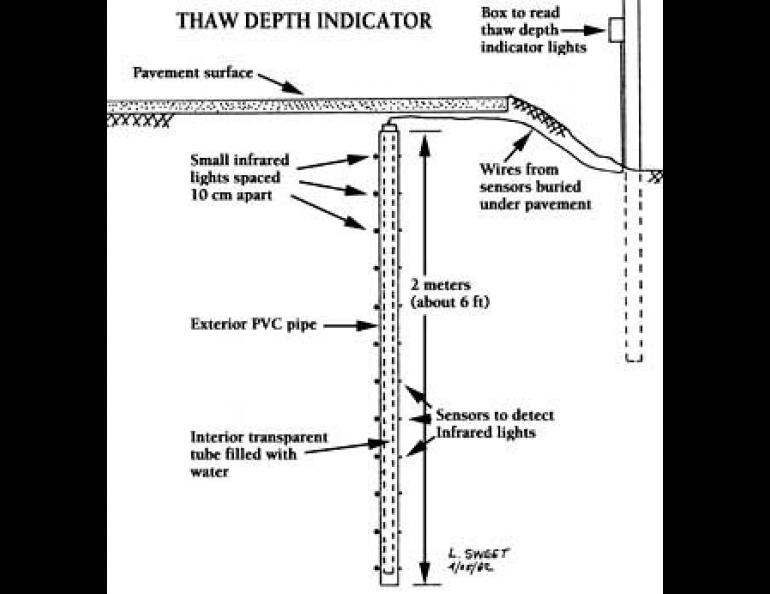
Highway Load Restriction Determination
During the winter, frost heaving can occur beneath Alaska's roadway pavements. Frost heaving is the result of freezing soil drawing water from underlying unfrozen areas, resulting in the formation of ice lenses or layers.
In the springtime as the roadways thaw, large concentrations of excess water from these ice lenses are present in the roadbed. During the thawing period, the road foundation becomes sponge-like and saturated with water, and heavy loads may crack the pavement. For this reason, "spring load restrictions" are commonly applied to prevent pavement breakup during the critical thawing period.
Research engineers of the Alaska Department of Transportation and Public Facilities (DOTPF) have learned that the roadbed generally reaches its lowest strength when the thaw depth is between 20 to 40 inches (1/2 to 1 m), with strength recovery by the time the thaw reaches 50 inches (1-1/2 m). To be safe, load restrictions should be applied when thawing begins.
It is difficult to know when the thaw depth has reached the point that load restrictions should be applied or when they should be removed. It is important to know that information because the loss in revenue to the commercial trucking industry when load restrictions are applied has been estimated at $100,000 per day on a statewide basis. On the other hand, the damage to state roads when load restrictions are not in force (but should be) is about $158,000 per day.
Three of these thaw tubes were installed in the Fairbanks area in April of this year. These will help to make an accurate determination of when to remove load restrictions.
Image Caption continued: Small infrared light sources distributed down the side of a piece of PVC pipe are mounted opposite light sensors. A transparent tube filled with water is placed inside the PVC pipe. When the water is frozen, the ice diffuses the light and the sensor cannot detect it. As the thaw gets deeper and melts the water in the tube, the sensors will detect more and more light. Wires from each light are buried under the pavement to a monitoring box on a nearby pole which is checked daily.





